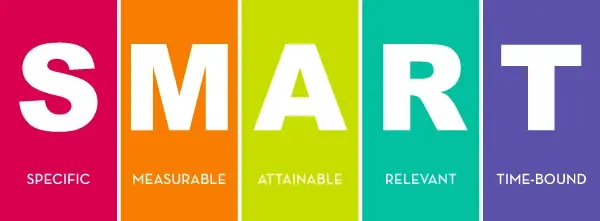
Why Set Goals?
Setting goals can be an effective strategy for assisting you in your health and fitness journey while helping you achieve your life's goals.
Many high performers in every industry, including elite athletes, corporate leaders and famous people, all set goals. Therefore, why shouldn’t we? When you set goals, you gain a long-term vision of where you want your life to be in life and how you want to look and feel. This creates short-term motivation to help you put all the right pieces in place. Whether you're organizing your time better, reaching out to a professional for help or gathering resources to help you succeed.
Once you set a clearly defined, measurable and attainable goal, it will no longer feel like a dream, but more so a reality. When you reach your goals, you will then know that nothing is impossible and you might even come up with new goals to achieve.
Setting SMART Goal
You want to make sure you set yourself up for success by setting realistic and achievable goals within a reasonable time frame, and specific to your lifestyle. Using the SMART Goal exercise will help you to make sure you hit all of those key points.
SMART Goal breakdown:
Specific
Measurable
Attainable
Relevant
Time-bound

Be Specific
You want your goal to be as clear and specific as possible for it to be effective. A common goal a lot of people will say is, “I want to be healthy” or “ I want to be fit”. Those might be some things that you want to achieve, however, they aren’t specific enough. How will you know when you reached "being fit"? These goals are a bit too vague.
Some specific examples may be, “ I want to lose weight”, “I want to lose inches around my stomach” or “I want to run 5 km”. These are more specific because it provides more
Make it Measurable
Now that you have your specific goal in mind, we want to make sure it is measurable. This will allow you to keep track of your progress and stay motivated/disciplined along the way. Additionally, it gives your training a purpose, which makes it simpler to work towards.
A good way to know if the goal is measurable is by asking yourself:
How many?
How much?
How will I know when it is accomplished?
Some examples of this for health and fitness-related would be, “I want to lose 6 inches around the waist”, “I want to lose 20 lbs” or “I want to bench press 100 pounds”. This now makes it measurable because you know exactly what you want to achieve, and you now know when you’ve reached your goal.
Is it Attainable?
While it might be nice to think of getting to the big picture, we want to make sure that the goal is still attainable and works around your lifestyle. This is where you can devise different action steps to make your goal a reality.
For example, if your goal was to do 30 push-ups but yet you feel like you have a really busy schedule. You then plan to get up earlier 3 times per week to do 5 push-ups. Once they start getting easier, you will then up it to 10 push-ups and so on.
Is it a Realistic Goal?
The goal might feel like it is tough to get to, but we want it to be possible when you set your mind to it. A good way to do this is by breaking your big goal down and setting small goals and early wins along the way. When we set smaller goals, it allows us to celebrate the small wins, keeps us motivated and helps us stay on track for our end result.
Let’s consider someone’s goal is to run 10 km. If you aren’t a runner or haven’t ran in a couple of years, then this might take 4-6 months. You can then break this up into smaller goals by wanting to run 5 km in 2-3 months.
Is it Time Specific?
When you come up with a goal, you want it to have a start and end time. This allows you to set a plan in place, celebrate the small wins, and not let everyday tasks get in the way of your overall goal.
Be honest with yourself while choosing a time frame. After picking a length of time, ask yourself “is this a reasonable time for me to accomplish it” if you start second-guessing yourself, then break it up and make the goal smaller. Remember, start small and celebrate the small wins, because it is the small wins that will get you to the big picture.

It's time to start putting your newfound knowledge of SMART goals to use.
Now that you know how to create SMART goals, it's time to start creating your own goals. Find a quiet space where you can sit down and plan it all out.
When you have a plan in place and know the days you will be taking action, like exercising, for example, put it in your calendar. If it's on your calendar, you'll be reminded to set aside that time to exercise, and if it's on your phone, you'll receive a notification. If you must miss that day, consider which day of the current week you will make up for it before removing it.
One thing to always remember when setting goals is that they have to be relevant to you. It will be far more difficult to follow through with your goals if they aren't meaningful to you or realistic for you.
Comments